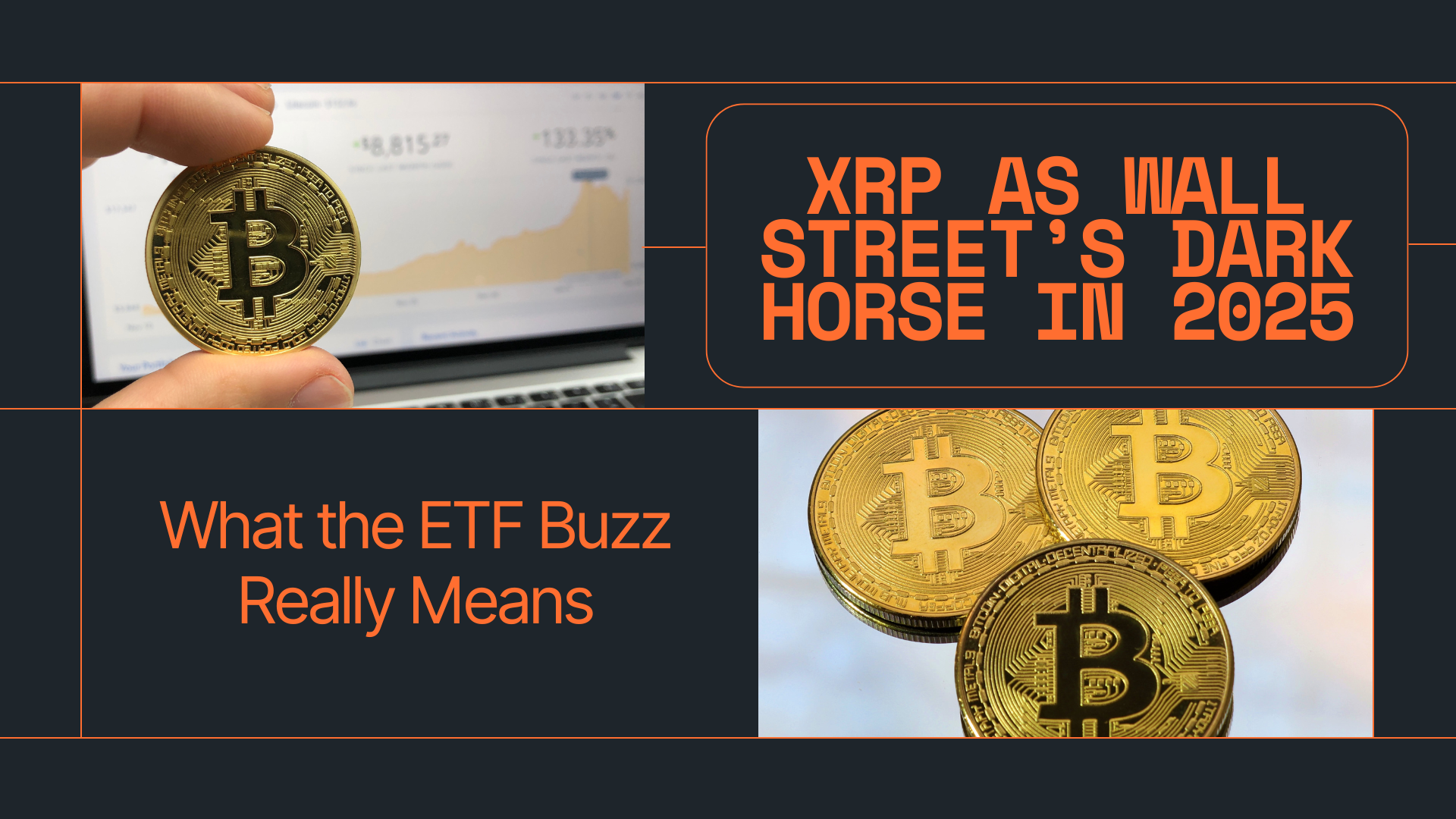
The crypto rumor mill is loud, but this week’s chatter around “XRP as Wall Street’s dark horse” isn’t just noise. Cointelegraph’s new explainer ties together several threads—spot-ETF filings, CME futures adoption, and a potential U.S. bank charter for Ripple—that could change how institutions approach XRP. The framing is simple: if regulators greenlight an XRP ETF and Ripple secures a charter, institutional investors may start treating XRP more like a mainstream investable asset—akin to how they’ve approached Bitcoin and Ether post-ETF—than a niche payments token with legal baggage.
Why the ETF drumbeat matters
ETFs turn crypto from a “specialist” trade into something brokerage-account simple. Per Cointelegraph’s tally, seven spot XRP ETF filings are before the U.S. SEC, with six key decisions clustered between Oct. 18 and Oct. 25, 2025(Grayscale, 21Shares, Bitwise, Canary, WisdomTree, CoinShares). That cadence mirrors the high-drama approval windows we saw for BTC and ETH earlier in the year. Notably, the SEC extended its review of the WisdomTree XRP Fund in late August—formalized in an SEC order—signaling that staff are working through the details instead of rejecting outright.
Some issuers aren’t just copying vanilla spot funds. Amplify proposed an options-overlaid (“covered call”) XRP ETF, the kind of yield-focused wrapper that appeals to traditional income investors—another clue that issuers believe there’s a real market beyond crypto-native buyers.
The legal backdrop that changed the conversation
Institutions care about legal clarity. In July 2023, U.S. District Judge Analisa Torres ruled that XRP itself isn’t a security when sold on exchanges (so-called “programmatic” sales), while finding that certain institutional sales by Ripple did violate securities laws. That split decision opened the door for U.S. relistings and more conventional trading access. In August 2025, Reuters reported the SEC’s long-running case had concluded with Ripple paying a $125 million penalty, cementing the outcome while keeping the institutional-sales injunction in place. For secondary-market investors, the key takeaway is the same: trading XRP on exchanges is not, by itself, a securities transaction—a foundation upon which ETF lawyers can build.
Like Bitcoin: Here’s what funds really mean
No one is saying XRP suddenly is Bitcoin. The comparison most funds make is practical, not ideological:
- Regulatory pathway: After the 2023 ruling, exchange trading of XRP has a clearer path in the U.S., similar to the way funds interpret BTC/ETH’s status post-ETF. That doesn’t make XRP a commodity in the CFTC sense, but it reduces friction for mainstream products that give price exposure.
- Institutional plumbing is developing: On CME, XRP futures launched in 2025 and crossed $1B in open interest within months—an adoption curve comparable to other large-cap crypto listings and an important signal for risk desks that rely on regulated hedging tools.
- Investable wrappers are lining up: Multiple spot filings (plus structured variations like covered-call ETFs) point to a menu of exposures that wealth platforms can actually use if approvals arrive.
Put differently: a pathway to regulated exposure + deepening derivatives liquidity is why some allocators think XRP could slot into portfolios the way BTC/ETH did after their ETFs.
The October “double event”: ETFs + a bank charter
Cointelegraph flags a second catalyst that traditional finance understands instinctively: a banking license. Ripple has applied for a national trust bank charter—publicly visible on the OCC portal—with an October decision window discussed alongside the ETF dates. A charter would not make XRP an FDIC-insured deposit (it wouldn’t), but it would let a Ripple-affiliated trust bank offer regulated custody and payments services under federal supervision—institution-friendly infrastructure that strengthens the “utility” side of the XRP story.
If both the ETF approvals and the OCC charter were to land in the same window, expect a step-function change in how wealth platforms, RIAs, and corporate treasurers talk about XRP (and a very different liquidity picture). If one lands and the other stalls, the narrative still improves, just less dramatically. If neither lands, sentiment likely cools fast.
What the data already show
Skeptics often say, “Show me the institutions.” Two datapoints matter:
- CME futures: The exchange’s regulated XRP futures provide hedging/price-discovery rails that many compliance teams require before they size up spot exposure. CoinDesk reports XRP OI surpassing $1B within months of launch, a pace that suggests real desk activity rather than retail alone.
- Global payments traction (utility): The payments narrative persists—Ripple markets enterprise rails (Ripple Payments, formerly RippleNet) and continues partnerships. Regardless of marketing claims, the OCC filing itself and recent fintech partnerships show the company pushing deeper into regulated money movement, not merely token promotion.
How to read the next few weeks (if you’re an investor)
- Watch the SEC docket, not just social media. Official actions like the WisdomTree delay order are your source of truth on timing and process; avoid over-interpreting rumor cycles.
- Track derivatives liquidity. If CME open interest and volumes continue to climb into the decision window, it strengthens the case that allocators are preparing to hedge spot-ETF flows.
- Model “utility confidence.” A charter approval would matter less for narrative and more for operational trust—how willing banks/fintechs are to integrate with Ripple-run infrastructure under U.S. oversight.
Bottom line
Cointelegraph’s “dark horse” label works because multiple institutional signals are converging at once: a stack of spot-ETF filings heading toward October decisions, CME futures growing to billion-dollar open interest, and an OCC charter application that, if approved, could normalize Ripple’s role in regulated financial plumbing. Layer that on top of a court record that clarifies exchange trading of XRP is not, by itself, a securities transaction, and you can see why some funds say XRP is starting to look—from a portfolio-plumbing standpoint—a bit more like Bitcoin/Ether post-ETF than the market gave it credit for. None of this guarantees performance. But it does explain why institutions are finally paying attention.